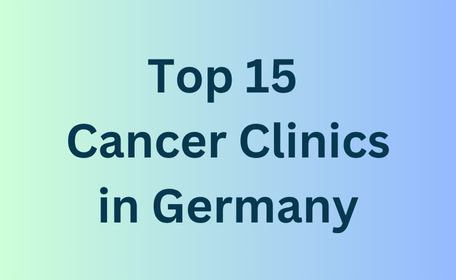Targeted therapy represents a significant advancement in modern oncology, focusing on precise treatment strategies that aim to affect only cancer cells while minimizing damage to healthy tissues. This selectivity offers patients a potentially safer treatment option with fewer side effects compared to traditional chemotherapy. By tailoring medications to the unique molecular characteristics of each patient’s tumor, targeted therapy opens new possibilities for more effective and individualized cancer care*.
What Is Targeted Therapy?
Targeted therapy, often referred to as precision therapy, is based on a deep understanding of the genetic and molecular mechanisms driving tumor growth. The primary goal is to block or modify specific proteins, genes, or signaling pathways that contribute to the proliferation and spread of cancer cells. This approach allows for more focused and potentially more effective treatment.
Research in this field is continuously evolving, with scientists identifying new molecular targets and biomarkers. These discoveries enable the development of new medications and help match existing drugs to the patients most likely to benefit from them. For example, certain inhibitors are specifically designed to target mutations in genes such as EGFR or ALK, which are relevant in some types of lung cancer.
Main Methods of Targeted Therapy
Modern oncology employs several methods within targeted therapy, each addressing cancer growth through different mechanisms:
- Monoclonal antibodies: These are laboratory-produced molecules that attach to proteins on the surface of cancer cells, either blocking growth signals or delivering toxic substances directly to the tumor.
- Tyrosine kinase inhibitors (TKIs): These drugs interfere with enzymes responsible for signaling cancer cell growth and division, helping to slow or stop tumor progression.
- Immunomodulators: Designed to enhance the body’s immune system, enabling it to better detect and fight cancer cells.
- Gene therapy: This emerging approach seeks to repair or modify faulty genes that contribute to cancer development.
Recent research also focuses on inhibitors targeting new signaling pathways, such as mTOR and PI3K, which are important in regulating cell metabolism and growth. These strategies aim to expand treatment options even for patients with advanced-stage disease.
Advantages and Challenges
Targeted therapy offers several potential advantages, including precision in attacking cancer cells, reduced impact on healthy tissues, and fewer side effects compared to conventional chemotherapy. Many patients report lower incidences of nausea, hair loss, or severe fatigue during treatment.
However, one of the main challenges is the possibility of tumor resistance. Over time, cancer cells may adapt, making the initial treatment less effective. To address this, oncologists often combine targeted drugs with immunotherapy or chemotherapy, increasing the chances of controlling the disease.
How Targeted Therapy Differs from Chemotherapy
While chemotherapy affects all rapidly dividing cells—both cancerous and healthy—leading to a broad range of side effects, targeted therapy works selectively against molecules essential for tumor growth. This selectivity aims to minimize harm to healthy tissues, potentially improving the patient’s quality of life during treatment.
When Targeted Therapy Is Used
Oncologists may recommend targeted therapy for various cancers, including breast cancer, lung cancer, colorectal cancer, melanoma, stomach cancer, and liver cancer. It is also used in hematological conditions such as leukemia and lymphoma, as well as certain autoimmune diseases like rheumatoid arthritis and psoriasis. Before initiating treatment, molecular and genetic testing of the tumor is essential to determine if specific targeted drugs are suitable for the patient.
Treatment Process
The course of targeted therapy typically includes several stages: comprehensive diagnostic testing, selection of appropriate medication and dosage, and continuous monitoring to evaluate effectiveness and adjust the treatment plan if necessary. The duration can vary from several weeks to months, depending on the type and stage of the disease.
Some patients may receive targeted therapy in combination with other treatments, such as immunotherapy or chemotherapy, to increase its overall effectiveness. This multidisciplinary approach can improve treatment outcomes and extend remission periods.
Costs of Targeted Therapy
The cost of targeted therapy varies depending on the cancer type, the specific drugs used, treatment duration, and the chosen clinic. In Germany, for example, treatment may range from €5,000 to €50,000, including diagnostics and consultations. Individual medications can cost between €2,000 and €10,000 each. While these figures can be significant, for eligible patients, targeted therapy may offer improved survival rates and quality of life.
Where to Receive Targeted Therapy
Germany is among the leading countries offering targeted therapy, with advanced diagnostic equipment, highly trained specialists, and an emphasis on personalized treatment plans. International patients can arrange care through platforms such as AskGermanDoc, which provides assistance in selecting clinics, translating medical documents, arranging consultations, and offering support throughout the treatment process.
Conclusion
Targeted therapy represents a transformative shift in cancer treatment, combining scientific innovation with individualized care. While challenges such as drug resistance remain, ongoing research continues to expand the potential of this approach. For many patients, it offers a promising alternative to conventional treatments, with the goal of improving both survival and quality of life.
Sources
- European Society for Medical Oncology (ESMO). Targeted Cancer Therapies. www.esmo.org
- Mayo Clinic. Targeted Therapy for Cancer. www.mayoclinic.org
- German Cancer Research Center (DKFZ). www.dkfz.de
Disclaimer: The information provided in this article is for general educational and informational purposes only and does not constitute medical advice. It should not be used as a substitute for professional diagnosis, treatment, or medical consultation. Always seek the advice of qualified healthcare professionals regarding any medical condition or treatment. AskGermanDoc does not promote or advertise specific medical services, physicians, or therapies.



